
|
Sale 28
Pre-Long Beach Coin Auction
| World Gold Coins - "1715 Fleet" Treasure |
| |
| |
| Lot |
Photo |
Description |
Realized |
Lot 2788 |
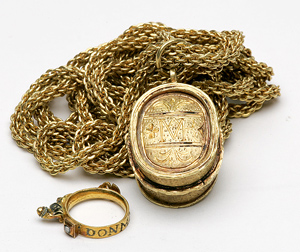 |
Spanish Colonies. Historic, Antique High Karat Yellow Gold Pendant-Locket & Necklace. Salvaged from the wreckage of the historic 1715 Spanish Fleet, this magnificent double sided oval shaped locket, measuring approximately 1¼ inches in length, 1 inch in width and 5/8 of an inch in depth, it is hand engraved on one side with the initials MAR in the center and floral patterns on the top and bottom, on the reverse side it also hand engraved with the initials IHS, with a crucifix engraved in the upper section of the initial H and floral patterns on the top and bottom side. Inside the locket is an incredible high karat yellow gold band style ring, the top is decorated by a man/pirate with peg legs attached to a chain and hanging lock, also on top of the band is a square shaped diamond, measuring approximately 2.80 x 2.80 mm., bezel set in a high karat yellow gold square box, the bottom outer side of the band is engraved with the letters DONMDAME, it is completed by a unique circular bail and an wire style O ring in which 3 high karat yellow gold multi link chains are attached, each high karat yellow gold link chain measures approximately 26 inches in length and approximately 3.50 mm in width. All having a gross weight of approximately 188.70 grams.
The story of the shipwrecks of the 1715 fleet and their sunken treasures really starts with Felipe V, who was recognized as the King of Spain under the conditions of the Treaty of Utrecht ending the war of Spanish Succession and to Spain's exclusive hold over the West Indies. As a result of the war, Spain's economy was in ruins. During wartime it had been impossible to continue the bringing of treasure from the New World to repay Spain's growing debts, and the situation was steadily growing more desperate
In 1714, the Spanish queen had died. Felipe V chose Elizabeth Farnese, Duchess of Parma as the new queen. She would not marry the King, however, until a large dowry of jewels from the New World had arrived.
A plan was devised to send two separate fleets: the Galeones de Tierra Firma and the New Spain Flota. The Galeones, commanded by General Don Antonio de Echeverez y Zubiza, was to go to Cartagena to load "Pieces of Eight" from Bogotá, Colombian emeralds from the Muzo mines and gold jewelry from Peru. Meanwhile the Flota, under the command of General Don Juan Esteban de Ubilla, would proceed to Vera Cruz to pick up silver and gold ingots from Mexico City and trade goods from Acapulco, including silks, ivory and Chinese porcelains from Manila and Canton. The two fleets would meet in Havana and then proceed together back to Spain.
The Galeones Armada was the first to arrive in Havana, while the Flota was delayed in Vera Cruz waiting for the pack mules from Acapulco. Finally Ubilla arrived in Havana the first week in May combining their fleets into one Spanish Armada.
Private merchants were waiting in Havana to get the cargoes aboard, exerting every influence available to them (including bribery) to get their cargoes included, in spite of the lack of cargo space. The governor of Havana chartered the French warship "Grifon" captained by Antoine Dare, to carry his own cargo.
The Spanish Armada was further delayed by last minute orders from Felipe V for additional gems and jewelry for additional gifts for the duchess. She finally agreed to go ahead and marry him, but would not consummate the marriage until the fleet had arrived with her dowry. Eight chests of gold, silver and jewelry were finally loaded into Ubilla's personal stateroom.
The combined fleet of this Spanish Armada finally left Havana on July 24, with calm seas and a steady wind. By noon, July 29, the wind died and even the sea birds disappeared. The next day the sun never seemed to rise. By noon the ships were called to close station. Visibility became so bad that lanterns were lit on the poop decks. The wind started picking up, and by nightfall was gusting at 100 knots. The sound of the breakers on the Florida reefs was the only sound heard above the winds. Terrified men tried desperately to free the lifeboats.
Meanwhile, Captain Antoine Dare, believing his warship had nothing to fear of pirates and the English, had separated himself from the rest of the fleet, steering more eastward. This, it turned out, gave him the room he needed to ride out the storm. By dawn of the 31st, his was the only ship left.
Eleven ships went down that night, and nearly half of the 2500 crew were lost. Wreckage and bodies were scattered over 30 miles of the uninhabited Florida coast. One of the damaged lifeboats was eventually repaired and two of the survivors sailed to Fort Augustin, 120 miles north. A ship was immediately sent to rescue the other survivors.
The Spanish mounted salvage attempts almost immediately, but the wreckage was spread over too wide an area. The constant attacks by sharks and barracuda on the divers under the water, and by pirates and Indians above, forced the Spanish to give up any hope of recovering the treasure, and four years later they abandoned the search.
Records say that only about 30% of the treasure was recovered.
The story of the 1715 shipwreck came from ShipwreckTreasures.com.
Estimated Value $15,000 - 25,000.
View details and enlarged photos
| Realized
$19,550 |
Lot 2789 |
 |
Spanish Colonies. "1715 Fleet" Treasure Artifact: Rare Gold "Cake" Ingot. Circa 1715. Very Rare. Half section of a crucible puddle or "cake" ingot. The sawn ingot of hemispheric shape and of convex section; small test cut on side. Size: 3-9/16 x 1-3/4". Weight: 822.4 grams. Ingot finely preserved and lustrous.
Estimated Value $15,000 - 19,000.
Cf. Schulman Auction, NY, Dec. 2-4, 1974, lot A56, for a complete example (this from the half century earlier treasure ship, Maravilla), and the comment on rarity. Ex "1715 Fleet".
View details and enlarged photo
| Unsold |
Lot 2790 |
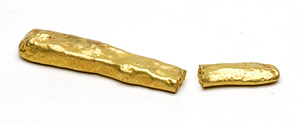 |
Spanish Colonies. "1715 Fleet" Treasure Artifact: Gold Ingot. Circa 1715. Small "finger ingot." The bar elongated and narrow, and roughly trapezoidal in section. Piece with faintly reddish-brown patina in the recesses. Size: 3-¼ x 9/16". Weight: about 87.79 grams. Bar broken at crystallized section of the casting, otherwise finely preserved and softly lustrous.
Maritime historians accord the 1715 wreck of the Spanish plate fleet as one great sea disasters recorded. The story begins with the rendezvous of eleven Spanish ships at the harbor of Havana in July 1715. These vessels came heavily laden, having spent the previous months at various Latin American ports loading treasure, bullion, and cargo. A fleet consisting of a combination of two fleets: the cargo ships, known as the Galeones de Tierra Firme, and the New Spain Flota, were formed under the joint command of Captain-General Juan Esteban de Ubilla and Don Antonio de Echeverez. On the 27th of July the enlarged fleet weighed anchor and set sail for Spain. As a precaution they traveled a northeasterly course, through the Florida Straits and up the east coast of Florida, keeping the Florida coast in sight for as long as possible, before they would have caught the trade winds that would take them across the Atlantic and to Spain. But they never made it that far. On the night of July 30-31, the weather changed rapidly, and the fleet soon found itself engulfed in a vicious hurricane.
Ten of the eleven galleons were smashed to pieces in the nearby coral reefs along the east coast of Florida, between what is now Cape Canaveral and Fort Pierce. Both Echeverez and Ubilla were victims of the storm before the night was over. The one transport ship to survive was the French ship, El Grifon, sailing under the Spanish flag. Ironically, this was because the captain, Don Antonio Dare, had disobeyed fleet orders and was traveling further north and away from the fleet, and so managed to stay clear of the reefs. All told eleven ships went down, and nearly half of the 2,500 lives on board were lost. In terms of registered treasure, perhaps something in the order of close to 150 million dollars in today's money was lost. The Spanish mounted salvage attempts almost immediately after the tragedy, but the area over which the wreckage was spread was too large for them to be entirely successful. Some of the salvages were successful, but the majority of the cargo was lost to the ocean.
This loss was certainly a blow to King Philip's fiscal expectations for the year, and sizable enough to create disturbances in the Spanish economy for a number of years. King Philip V of Spain was first of the new Bourbon (French) dynasty to mount the throne of Spain. And this was accomplished by war, both in Spain and abroad. And during wartime, it becomes difficult at times, if not impossible, to continue the fleet system of transporting New World treasure back to Spain. Huge backlogs had developed and remedy was now desperately needed. Thus Spain's financial situation was surely motivation to assemble this transport loaded with vast treasure from the New World. A venture which was lost to the capriciousness of the New World seas.
Estimated Value $1,750 - 2,250.
Ex. "1715 Fleet".
View details and enlarged photo
| Realized
$1,668 |
Lot 2791 |
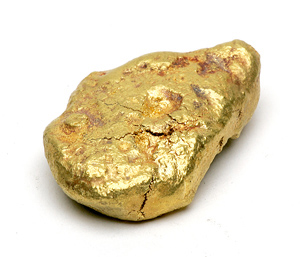 |
Spanish Colonies. "1715 Fleet" Treasure Artifact: Gold Ingot. Circa 1715. Small puddle ingot, roughly tear-shaped. Size: 1-½ x 7/8". Weight: 66.09 grams. Ingot finely preserved and lustrous, with slight cuprous and sulfide patinas.
Estimated Value $1,350 - 1,750.
Ex " 1715 Fleet".
View details and enlarged photo
| Realized
$1,553 |
Lot 2792 |
 |
Spanish Colonies. "1715 Fleet" Treasure Lot: Philip IV, 1621-1665. Mix lot of 1 Reales to 8 Reales from the "1715 Fleet". Lot of 32 coins. Averages Fine.
Estimated Value $1,000 - 2,000.
Ex " 1715 Fleet".
View details and enlarged photo
| Realized
$2,760 |
Lot 2793 |
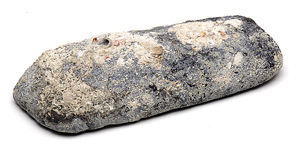 |
Spanish Colonies. "1715 Fleet" Treasure Artifact: Large Silver Ingot. Circa 1715. Large silver bar, rectangular and roughly trapezoidal in section. Bar probably stamped with control marks, but which are hidden because the bar is thickly encrusted with sulfide crust, plus light sand, shell, and coral patina. Size: 6-5/8 x 3". Weight: about 2,452.5 grams. Rare.
Estimated Value $1,500 - 2,500.
Note similar bars illustrated in Schulman Auction, NY, Dec. 2-4, 1974, but these from the half century earlier treasure ship, Maravilla
Ex " 1715 Fleet".
View details and enlarged photo
| Realized
$1,725 |
Lot 2794 |
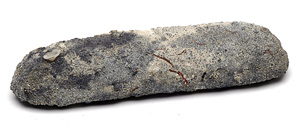 |
Spanish Colonies. "1715 Fleet" Treasure Artifact: Silver Ingot. Circa 1715. Another, smaller "finger ingot." The silver bar elongated and narrow, and roughly loaf-shaped in section. Bar thickly encrusted with sulfide crust, plus light sand and shell patina. Size: 5-½ x 1-3/8". Weight: about 676.3 grams.
Estimated Value $650 - 1,000.
Ex " 1715 Fleet".
View details and enlarged photo
| Realized
$776 |
Lot 2795 |
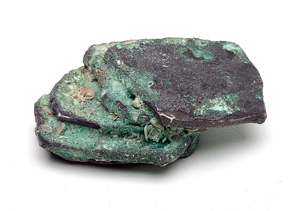 |
Spanish Colonies. "1715 Fleet" Treasure Lot: . Philip V(?). Cluster of five 8 Reales. Coins of squarish shape, with fairly thin black sulfide patina, this under cuprous/sand encrustations. Coins look as if they might clean up easily, and well.
Estimated Value $350 - 450.
Ex " 1715 Fleet".
View details and enlarged photo
| Realized
$518 |
Lot 2796 |
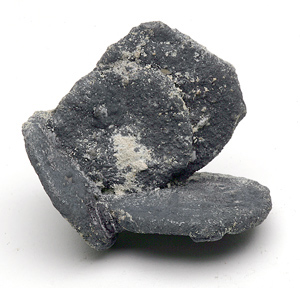 |
Spanish Colonies. "1715 Fleet" Treasure Lot: . Perhaps Philip IV - Philip V. Attractive "floral" cluster of four 8 Reales. One coin of rather squarish shape, rest round, with heavy black sulfide patina and slight sand and shell encrustations. A fine display object.
Estimated Value $300 - 400.
Ex " 1715 Fleet".
View details and enlarged photo
| Realized
$437 |
Lot 2797 |
 |
Spanish Colonies. "1715 Fleet" Treasure Lot: . Probably Philip IV - Philip V. Cluster of four 8 Reales. One coin rather squarish and elongated shape, rest roundish, with heavy black sulfide patina and light sand and shell encrustations. A good display object.
Estimated Value $300 - 400.
Ex " 1715 Fleet".
View details and enlarged photo
| Realized
$403 |
Lot 2798 |
 |
Spanish Colonies. "1715 Fleet" Treasure Lot: . Two tier silver ingot, perhaps comprised of partially remelted cobs. Somewhat cleaned, with much remaining black patina. Size: 2 x 1-5/8". Weight: 218 grams. Interesting.
Estimated Value $200 - 300.
Ex " 1715 Fleet".
View details and enlarged photo
| Realized
$242 |
Lot 2799 |
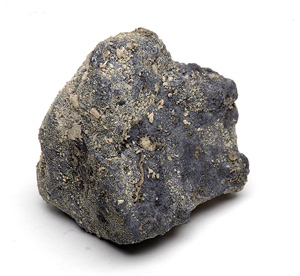 |
Spanish Colonies. "1715 Fleet" Treasure Lot: . Uncertain silver object -- perhaps an ingot or a cluster of small-sized reales. Of roughly pyramidal shape, with heavy black sulfide patina and light sand and shell encrustations. Size: 1-5/8 x 1-3/4 x 1-3/8." Weight: 101.8 grams.
Estimated Value $150 - 250.
Ex " 1715 Fleet".
View details and enlarged photo
| Realized
$196 |
Lot 2800 |
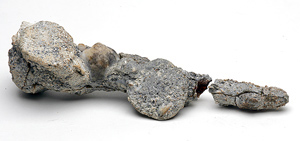 |
Spanish Colonies. "1715 Fleet" Treasure Lot: Unusual Wreck Memento. A fascinating survival from the fleet tragedy. The object is a coral and shell concretion around a large steel spike, likely used in the ship's construction. The steel has corroded away, leaving only a thin layer adjoining the coral -- in essence, a concrete "mold" of the now absent spike. Attached to this are three 8 Reales. The "mold" was rebuilt from about 15 pieces, and is complete. A section has been left unglued so that the hollow interior can be examined. Overall length: 7-¼."
Estimated Value $300 - 400.
Ex " 1715 Fleet".
View details and enlarged photo
| Realized
$403 |
|
|